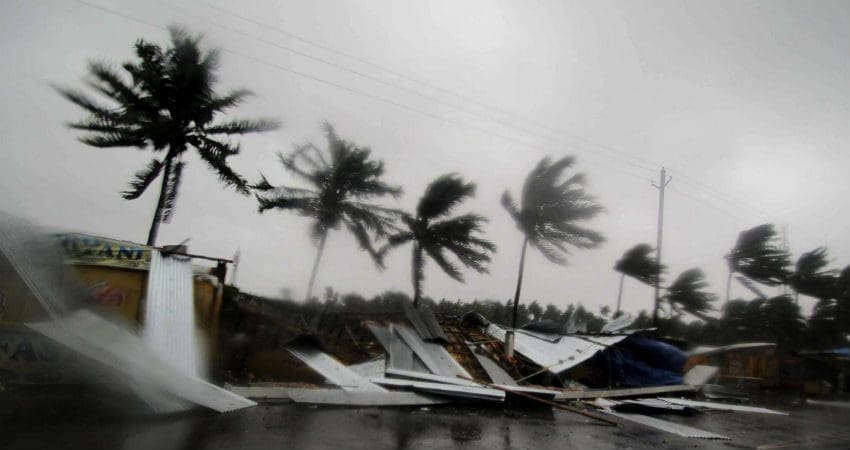
Sarah Hussain | Staff Blogger
With the initial speed of around 200 kilometres an hour, the cyclone Fani was one of its kind in fifty years of Odisha’s history. Fani dragged the citizens of Odisha in a nostalgic phase giving them the nightmares of Super Cyclone of 1999. Nineteen years of difference and the developments remained at an unsatisfactory level when along with the capital city, many other areas were plunged into morbid darkness of despair and a chaotic quietness onto the streets. Along with Odisha, various other regions like that of Bengal and Bangladesh have been on high alert since, with the state governments taking precautionary measures to minimise the damage. While, in Odisha, the government was successful in reducing the death toll to nearly 38 in contrast to the tens of thousands of them in the Super Cyclone of 1999, the residents of the interior parts of the same showed dissatisfaction in lieu of no steps taken to avoid the larger problems in the heart of the state. Many might agree that aid had been brought to those who needed it the most, like mainly on the coastal belts or close to it, whereas others might disagree with the change in attitudes of the rescue aids provided by the government.

Fani has cruelly turned out to be a perfect visualisation of the quote – “Calm before the storm”. Consisting of two phase-wise destructions, the cyclone had been a dangerously antagonizing one. The first phase, when the wind hit the land, caused slow gushes of wind and light rainfall which then transformed into wind speeds of around 150 kms, something that the residents had been expecting. Although, what was not expected was the second phase of the cyclone that presented itself after a mere half an hour of the first, taking the residents of Bhubaneswar by surprise. With a wind speed now increased to nearly 220 kms, cyclone Fani swept various parts of Odisha into darkness, cutting it off from the rest of the country. Rooftops wrecked, bamboos and trees uprooted, electric poles and communication towers fallen, 3rd May witnessed a period of hysteria with people tucking themselves behind the safety of their houses. The roads had gone with empty, with a “war zone” like after image with trains and flights to and fro Odisha being put on the halts as safety measures and lack of networking stability. Due to little or no communication, no internet services and a decreased rate in available transport, hospitals, schools and corporate buildings were closed down for nearly three to four days. While the train and airport services have been resumed, electricity and network connections are still lost in the midst of the citizens’ dilemma regarding the scant water supply.
Uprooting the trees and poles around Odisha, cyclone Fani has uprooted a perfectly normal way of living that the inhabitants had grown used to after continuous cyclones like Hudhud, Titli and Phailin which have hit Odisha in the recent years but even to the already “used-to” inhabitants, the destruction and chaos was uncalled for. Mostly, the psychological effect has immensely put Odisha on the edge of the cliff than any physical harm. The citizens are still torn between prioritizing the resumed office work or their household duties. Being on alert, Bengal did not undergo any drastic destructive phase where the emphasis of Fani was at its minimum but left nearly 70 people dead in parts of Bangladesh. With summer’s heat on its highest intensity, residing in darkness, the people of Bhubaneswar, Puri and various other cyclone-affected areas like Kendrapada, Jagatsinghpur, are restless and are losing patience against putting up protests against the “not up to mark” services provided by the state government. While half the nation might feel that living in the dark and without internet services, is very common to the majority of the nation’s population, but the plight of the conditions is only known by the those living in the situation. Majority of them believe that relief funds and promises made by the government are relentless and at times, not enough.
Editor’s Note: Sarah was in Odisha during the Cyclone and reports from her home town directly giving a first-hand account of what has been happening. Rescue efforts are already underway, and the Central and State Governments have promised and are working towards aid. You can directly contribute to Odisha Chief Minister’s Disaster Relief Fund online.
Manipal is doing its bit to contribute basic necessities to those affected through Goonj. Collection Centres have been set up in Interact Halls, KMC Manipal and the Student Plaza at MIT Manipal by the Volunteer Services Organization, MAHE.

Be the first to comment